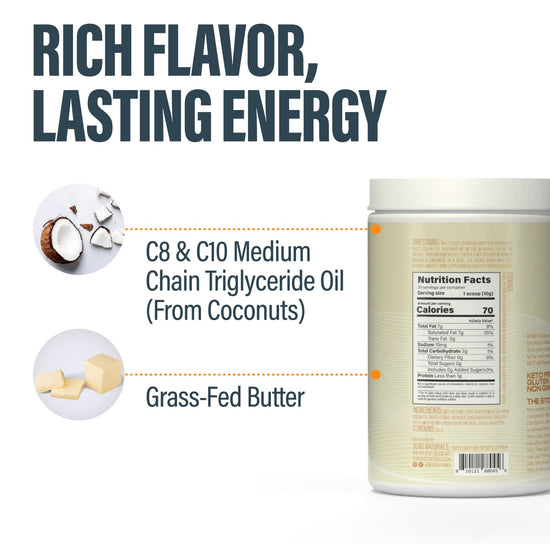Table of Contents
- Introduction
- Understanding Coffee Creamers
- Health Considerations: Creamer and Your Diet
- Crafting Your Perfect Cup of Coffee
- Conclusion
Introduction
Have you ever wondered why your morning coffee ritual feels incomplete without that splash of creamer? Perhaps you've been on a quest to find the ideal balance between flavor and health. For many, coffee is more than just a beverage; it’s a cherished daily ritual, a moment of peace before the day begins. But how much creamer should we really be adding to our coffee? This question isn’t just about flavor—it also intersects with health, lifestyle choices, and personal preferences.
In this blog post, we will delve deep into the world of coffee creamers, discussing the various types available, the role they play in our coffee experience, and how to find that sweet spot that satisfies your taste buds while keeping health in mind. We'll explore everything from traditional dairy creamers to trendy non-dairy alternatives, and how each option affects the overall taste and nutritional profile of your coffee. By the end of this article, you will have a clearer understanding of how much creamer to put in coffee tailored to your unique taste and health goals.
We'll also touch on the significance of moderation and how to enjoy your coffee without compromising your wellness journey. So, grab your favorite mug and let’s embark on this flavorful exploration together!
Understanding Coffee Creamers
Types of Creamers
When it comes to coffee creamers, the variety can be overwhelming. Here’s a breakdown of the most common types:
-
Dairy Creamers: These traditional options include whole milk, half-and-half, and heavy cream. They add richness and a creamy texture to coffee without overwhelming the flavor.
-
Non-Dairy Creamers: Perfect for those with lactose intolerance or who prefer a plant-based diet, non-dairy creamers come in many forms, including almond milk, oat milk, coconut milk, and soy milk. They often include added flavors that can enhance your coffee experience.
-
Flavored Creamers: Available in both dairy and non-dairy forms, these creamers are infused with flavors like vanilla, hazelnut, and caramel. They can transform a simple cup of coffee into a dessert-like treat.
-
Sugar-Free Creamers: For those watching their sugar intake, sugar-free options are available. However, it's essential to check the ingredient list, as these often contain artificial sweeteners that may not be as healthy as they seem.
The Role of Creamers in Coffee
Creamers serve multiple purposes in coffee:
-
Flavor Enhancement: Adding creamer can mellow the bitterness of coffee and introduce new flavors, making it more enjoyable for those who prefer a sweeter or creamier drink.
-
Texture Improvement: Creamers add a smooth and velvety texture that enhances the overall drinking experience.
-
Caloric Impact: Depending on the type and amount used, creamers can significantly alter the caloric content of your coffee. Understanding this impact helps maintain a balanced diet.
How Much Creamer Should You Use?
The amount of creamer to add to your coffee ultimately depends on personal taste and dietary preferences. Here's a simplified guide:
-
Light Creamer (1 teaspoon to 1 tablespoon): Ideal for those who enjoy a hint of creaminess without overpowering the coffee flavor. This is typically around 20-30 calories.
-
Moderate Creamer (1-2 tablespoons): A common choice for many coffee drinkers, providing a good balance of creaminess and coffee flavor. This usually ranges from 30-60 calories.
-
Heavy Creamer (3 tablespoons or more): If you prefer a rich, dessert-like coffee experience, you might opt for 3 tablespoons or more. Be mindful that this can add up to 100 calories or more, depending on the type of creamer used.
It’s essential to remember that these are just guidelines. The best approach is to experiment with different amounts to find what satisfies your palate without compromising your health goals.
Health Considerations: Creamer and Your Diet
Nutritional Impact of Creamers
Creamers can vary significantly in their nutritional profiles, so it’s crucial to choose wisely:
-
Dairy Creamers: While rich in calcium and protein, they can also be high in saturated fat. If you're mindful of your heart health, consider using them in moderation.
-
Non-Dairy Creamers: Often lower in calories, these can be a great alternative, but be cautious of added sugars and artificial ingredients.
-
Flavored Creamers: These can be tempting, but they often contain high amounts of sugar and preservatives. Always check the label before indulging.
The Sugar Factor
Many creamers, especially flavored varieties, contain added sugars that can contribute to excessive calorie intake. For example, a tablespoon of many commercial creamers can contain 5 grams of sugar or more. If you're trying to manage your sugar intake, consider reducing the amount of creamer or opting for unsweetened alternatives.
Moderation is Key
Finding the right amount of creamer is crucial for enjoying your coffee without overdoing it on calories or sugars. Instead of pouring freely, try measuring out your creamer until you find the balance that satisfies you.
Crafting Your Perfect Cup of Coffee
Experimenting with Ratios
One of the best ways to determine how much creamer to put in coffee is through experimentation. Here’s a simple method to find your perfect ratio:
-
Start Small: Begin with a small amount of creamer (1 teaspoon) and gradually increase it. Pay attention to how the flavor changes with each addition.
-
Taste Test: After each addition, take a sip. Does it enhance the coffee? Is it too sweet or too creamy? Adjust based on your preferences.
-
Keep Notes: If you find a ratio you love, jot it down for future reference. This way, you can replicate your perfect cup every time.
Consider Complementary Flavors
Another fun way to enhance your coffee experience is by pairing creamers with specific coffee roasts. For example:
-
Chocolate or Mocha Creamers: Pair well with dark roast coffee for a rich, indulgent flavor.
-
Vanilla Creamers: Complement medium roast coffees, adding a sweet and creamy balance.
-
Nutty Creamers (like hazelnut): These can enhance the flavor of lighter roasts, making for a delightful morning treat.
Conclusion
In the world of coffee, how much creamer to put in your cup is a personal journey that reflects your taste preferences, health considerations, and lifestyle choices. By understanding the types of creamers available, their nutritional implications, and experimenting with different ratios, we can create our ideal coffee experience.
Remember, our coffee rituals are not just about the caffeine boost—they're about enjoying the moment and taking care of ourselves. As you continue to explore this flavorful beverage, think about the ingredients you’re using and how they contribute to your overall wellness.
FAQ
1. Is it better to use dairy or non-dairy creamers? It depends on your dietary preferences and health goals. Dairy creamers provide protein and calcium but can be higher in fat. Non-dairy creamers often have fewer calories but may contain added sugars and preservatives.
2. How can I reduce the sugar content in my coffee? Consider using sugar-free creamers, or try alternatives such as unsweetened almond or oat milk. You can also add spices like cinnamon or vanilla extract for flavor without the sugar.
3. Can I use flavored creamers every day? While flavored creamers can enhance your coffee, they often come with added sugars and calories. Using them in moderation is key to maintaining a balanced diet.
4. What are some healthier alternatives to traditional creamers? Healthier alternatives include unsweetened almond milk, coconut milk, or even blending in a scoop of collagen peptides to enhance both flavor and nutrition.
5. How much creamer is too much? The answer varies by individual, but a good rule of thumb is to keep your creamer intake to 1-2 tablespoons per cup of coffee to enjoy flavor without excessive calories or sugar.
Together, let’s enjoy our coffee while being mindful of our health and wellness goals!
Written by:

Butter MCT Oil Creamer
BUBS Butter MCT Oil Creamer (formerly Halo Creamer): Scientifically-Backed Brain and Body Fuel
BUBS Butter MCT Oil Creamer is your go-to for clean, fast-acting energy and focus, no crash included. It blends creamy grass-fed butter with fast-acting MCT oil powder (C8 and C10) to kickstart your day and keep you sharp. The MCTs go straight to work, giving your brain a quick boost while the grass-fed butter supports digestion and gut health.
Together, they help curb cravings, keep you feeling full longer, and support steady energy throughout the day—perfect for fueling your mornings or powering through the afternoon slump.
Starts at $36.00
Shop

